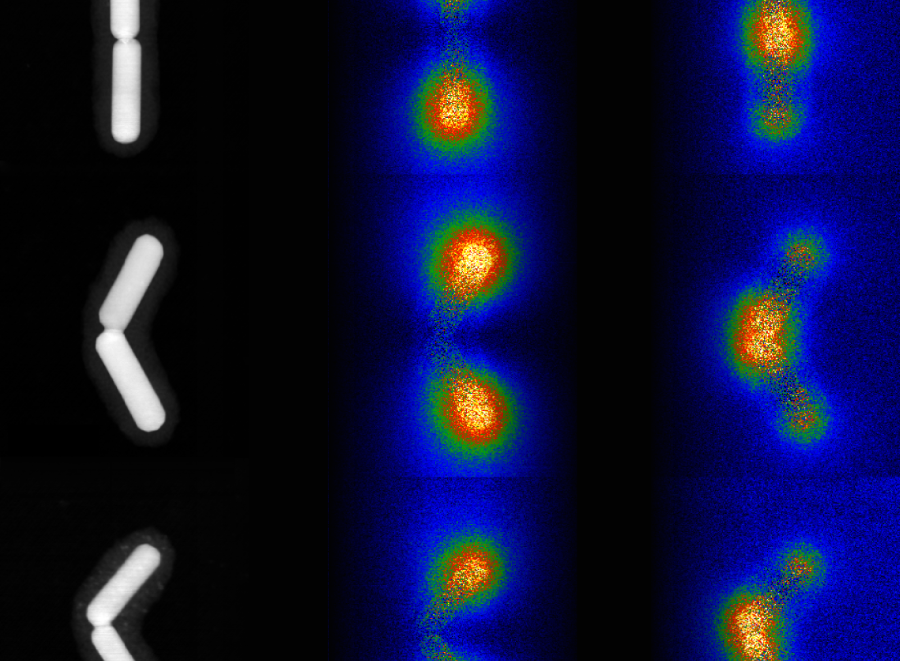The remarkable optical properties of metal nanoparticles make them enhance light fields, generate nanoscale light spots and prefer specific colors when scattering light. These tricks are played by plasmons, coherent oscillations of the free electrons in the metal. For a given metal, it is the nanoparticle geometry that determines the scattered color and the strength of the field enhancement. The dependence on geometry becomes even more pronounced for two or more nanoparticles close to each other, where particularly strong fields are concentrated in the gaps.
It thus came as a surprise, when a collaboration of the Nanooptics Group and the Theoretical Nano and Quantum Optics team (both University of Graz) with the Université Paris Cité and the McMaster University (Hamilton, Canada) found the exception to the rule. They had a close look at gold nanorods originally synthesized in solution, coupled to pairs at their end faces with molecular linkers only one nanometer long. While the distance between the rods was set by the linker length, the angle between the rod axes varied statistically. However, high-resolution electron spectroscopy data of substrate-deposited single rod pairs showed that this has no influence at all on the plasmonic gap mode.
Ironically, it is the individual nanorod’s geometry that renders the nanorod pair geometry irrelevant, as an extensive experimental study together with numerical simulations revealed. In fact, it is the hemispherical shape of the nanorod’s end faces that provides virtually identical plasmon modes for all mutual rod orientations. And that’s good news for ultrasensitive molecular sensing with plasmonic gap modes, as nanorod pairs can be synthesized in great quantity and nanoscale gaps. For once, without having to worry about geometry.
A. Hohenau, M. Bugnet, V. Kapetanovic, G. Radtke, G. A. Botton, N. Reichelt, U. Hohenester, J. R. Krenn, L. Boubekeur-Lecaque, N. Felidj, Binding angle robustness of plasmonic nanorod dimer resonances, Adv. Optical Mater. 2400929 (2024), doi.org/10.1002/adom.202400929
Image: Electron microscopy images of nanorod pairs, the middle and right hand rows depict the plasmon modes as visualized by electron spectroscopy (McMaster Univ. / M. Bugnet)
